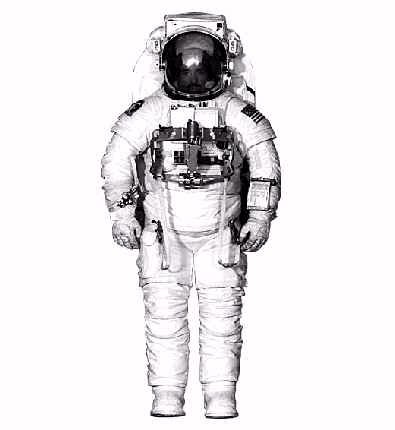|
|
|


|
Then Mark III is the current favorite suit of NASA's Advanced department. It uses effective bearing joints for the best manuverability. |
The ILC suit attempts to minimize wiegth by replacing many smaller bearing joints with soft fabric joints. This wiegth savings allows for longer explorations on a planet's surface. |
The David Clark suit attempts to maximize wiegth savings with intricately designed soft fabric joints nearly everywhere in the suit. It even replaces the Hard Upper Torso (HUT) with a fabric torso. |
This is a proof-of-concept test report that I did while working in the EVA & IVA Equipment Branch during the summer of 2000. It looks at all the myriad factors of mobility and methods to reduce joint load in space suit. Not the most offical report, but interesting.
Not that I'm counting, but you're visitor number 

 . Thanks!
. Thanks!
NASA does NOT sponser or endorse this site and its views are not necessary presented here. Much of the detailed space suit information presented here I gathered directly from offical NASA sites with the understanding that it abides with NASA Guidelines for the use or reproduction of NASA Materials, if you know of any violation, please inform me of it.